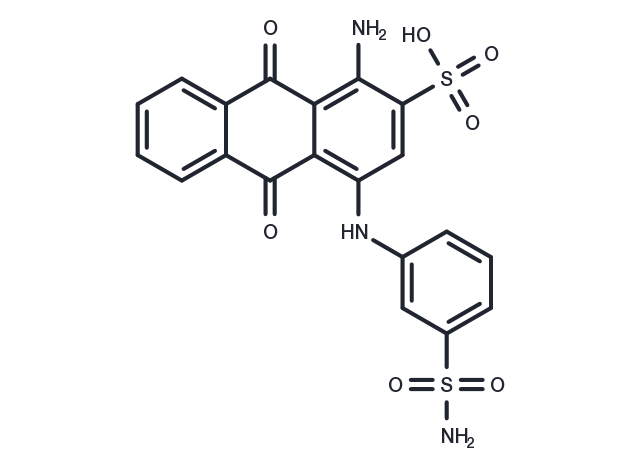Powder: -20°C for 3 years | In solvent: -80°C for 1 year


NSC117079 is an inhibitor of PHLPP.

| Pack Size | Availability | Price/USD | Quantity |
|---|---|---|---|
| 50 mg | 6-8 weeks | $ 789.00 | |
| 100 mg | 6-8 weeks | $ 1,320.00 |
| Description | NSC117079 is an inhibitor of PHLPP. |
| In vitro | PHLPP inhibitors (NSC117079 and NSC45586;?benzoic acid, 5-[2-[4-[2-(2,4-diamino-5-methylphenyl)diazenyl]phenyl]diazenyl]-2-hydroxy-,sodium salt.) in rat cortical neurons and astrocytes and compared the biochemical response of these agents with short hairpin RNA (shRNA)-mediated PHLPP1 knockdown (KD).?In neurons, both PHLPP1 KD and experimental PHLPP inhibitors activated AKT and ameliorated staurosporine (STS)-induced cell death.?Unexpectedly, in astrocytes, both inhibitors blocked AKT activation, and NSC117079 reduced viability.?Only PHLPP2 KD mimicked PHLPP inhibitors on astrocyte biochemistry.?This suggests that these inhibitors could have possible detrimental effects on astrocytes by blocking novel PHLPP2-mediated prosurvival signaling mechanisms. |
| In vivo | Animals administered the Phlpp inhibitor NSC117079 seven weeks post-injury exhibited sustained normal activity levels, in contrast to the control group which demonstrated reduced mobility and activity three months following joint injury. Additionally, NSC117079 significantly enhances the production of cartilage extracellular matrix components, namely glycosaminoglycans and aggrecan, in over 90% of human articular cartilage explants from osteoarthritis patients, alongside promoting increased phosphorylation of Phlpp1 substrates (AKT2, ERK1/2, and PKC) in human articular chondrocytes. A solitary intraarticular injection of NSC117079 effectively mitigates mechanical allodynia and decelerates articular cartilage deterioration in joints with a compromised meniscus. |
| Molecular Weight | 473.48 |
| Formula | C20H15N3O7S2 |
| CAS No. | 500363-63-3 |
Powder: -20°C for 3 years | In solvent: -80°C for 1 year
DMSO: 50 mg/mL (105.60 mM), Sonification is recommended.
You can also refer to dose conversion for different animals. More
bottom
Please see Inhibitor Handling Instructions for more frequently ask questions. Topics include: how to prepare stock solutions, how to store products, and cautions on cell-based assays & animal experiments, etc.
NSC117079 500363-63-3 Others NSC-117079 NSC 117079 inhibitor inhibit
